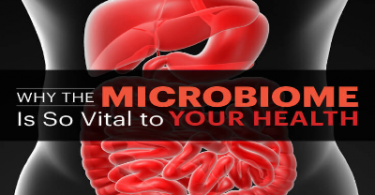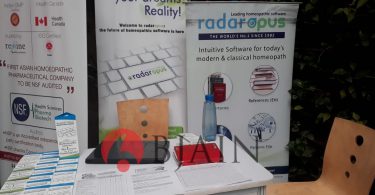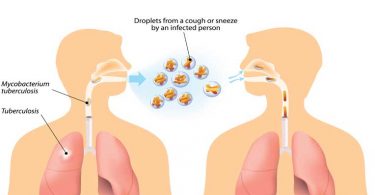Introduction
Heart diseases are an epidemic of the 21st century. Unfortunately the younger generation (< 45years) are also becoming the victims. They comprise a large and growing health care problem in addition to being an expensive bunch of diseases. During the past few decades, CAD rates in India and the subcontinent have practically doubled as opposed to the developed countries where the rates are declining. Even Indians residing abroad have a greater prevalence of this disease than their counterparts there. In this era of Mixed Miasms, Ischemic Heart disorders stand out to the fore. So for all practical purposes the prevention and homoeopathic management of atherosclerotic coronary artery disease should be the main focus.
Ischemic Heart Diseases– A clinical condition where there is a decreased blood supply to the heart muscle. Its extreme consequence is myocardial infarction. It can result from a transient or a permanent disproportion between the oxygen demand by the heart musculature and coronary artery blood supply. It can result from –
1. Obstruction in the lumen of the artery by atheroma or an embolus
2. Encroachment of the coronary artery lumen by disease of the arterial wall (arteritis)
3. A more than normal increase in myocardial oxygen demand exceeding the ability of the normal coronary arterial system to supply the needed blood as in valvular stenosis.
Atherogenesis begins in early childhood continues throughout life. It becomes clinically apparent in early middle age or later as seen in Indians. Recent studies have shown that coronary stenosis is dynamic rather than fixed lesions and there is impaired endothelial vasodilation at times of physical or mental stress. This paves way for the successful pharmacotherapy with homoeopathy. In a Predisposed Individual with an active Psorosycotic miasmatic state of disposition the Vital Force is disordered causing
Disordered function of Endothelial wall +
Endothelial tear – rise in Peripheral Resistance of blood
I
Non bacterial inflammation – healing by first intention: Psoric
I
Recurrent tears – intercellular fibrous tissue – Psoro sycotic
I
Lipid accumulation in subendothelial space that attracts Blood Macrophages
I
Foam cells formed (ingestion of lipids by macrophages)
I
Non-stenotic fatty streak formation
I
Plaque formation (increase size of streak) + fibrous cap
I
Depositions (Ca & Mg) on the scar: Sycotic end result
I
Embol Rupture Erosion Prog Stenosis Lumen block
I I I I I
SEI Acute MI UA CSA Small VD
{SEI – Subendocardial Infarction, MI – Myocardial infarction, US – Unstable angina, CSA – Chronic stable angina, VD – vessel disease}
CLINICAL SYNDROMES –
Acute States –
1. Life Endangering – Acute myocardial Infarction, Left Ventricular Failure, etc.
2. Symptom Syndromes – Angina pectoris, dyspnoea, Palpitation, Syncope, etc.
Chronic States – Cardiac Neurosis, Hypertensive states, Ischemic Syndromes, Metabolic Disorders and others.
COMMON EXPRESSIONS – Chest discomfort, Dyspnoea, Anxiety (Ghabrahat), Palpitation, Perspiration and Others like Choking / Suffocation in the throat or chest, sensations of a load on the chest or constriction etc. Also the site of symptoms may change from chest to upper abdomen, jaw, right Shoulder, back etc. Some people may not have any symptoms and IHD may be detected accidentally on routine cardiac tests.
INVESTIGATIONS –
1. Urine – Routine, microalbumin
2. Blood sugar, Lipid profile, Cardiac Enzymes (CPK-MB, SGOT, Trop T) ,
3. Electrocardiography, Tread Mill Test, Holter monitoring
4. X-Ray Chest, 2D Echocardiography
5. Coronary Angiography & Cardiac catheterization (gold standard)
RESEARCH PROJECT –
The National Academy of Homoeopathy, India has launched the project “Dil Ki Seva (Aa) Dil Se”. Duration of the project is from 2004-2014.
Venues –
2. Aadil Homoeo Heart Care Centres, Nagpur
3. Dept. Cardiology, Orange City Hospital & Research Centre, Nagpur
Objectives –
The present study is being carried out with the following objectives –
1. Explore the Scope & limitations of dynamic agents in Cardiac disorders.
2. Use lesser used remedies indicated in Cardiac disorders, thereby upgrading the Materia Medica with newer clinical symptoms and completing incomplete symptoms.
3. Train neophytes in Cardiology specifically from Homoeopathic viewpoint and inculcate confidence in homeopaths to handle cardiac emergencies.
4. Chart our Potency & Dose schedules & establish Management protocols
Staff –
Project Director- Dr. Aadil Chimthanawala. & Associates – Prof. Dr. Kasim & Sagira Chimthanawala and other 10 homoeopathic Research scholars.
Methods & Materials –
A prospective study of 428 patients. All patients have to undergo the following working schedule –
1. Data Collection – Acute symptoms palliated with acute remedies. Dose repetition depends upon the severity of the complaints.
2. Once settled, complete case data is collected on a Standardized Case Card. They are investigated for nosological diagnosis.
3. Management – all the cases are classified as follows:
* Cardiac Type A – Acute states à Short acting remedies
* Cardiac Type B – True Natural Case – miasmatically evolved. Eg.Cardiac neurosis, Tendencies, Diathesis, Hypertensive states, etc. à Constitutional approach
* Cardiac Type C – Gross Structural dis /secondary symptoms due to Disease End Results eg. Congenital H.D, etc à initially Palliative SOS Constitutional
4. Repertorization – as per case types
5. RPD- Remedy, potency and dose administered on homoeopathic Protocols designed by the Academy
6. Follow-up – discussion on each case with necessary investigations
7. Statistical compilation of records & Publication of successful atypical cases
Conclusions
From our observations we infer that :
1. Although IHD is a fatal disease, but it is also highly predictable, preventable and treatable. A study of this nature requires trained manpower, necessary appliances/equipments, sophisticated mechanization, thoroughness in Homoeopathic system of working & updated knowledge of Medicine in general & Cardiology.
2. Majority of constitutions suffering from Coronary Artery Diseases fall into the Tubercular miasmatic states. It is significant that 169 patients have responded positively to Homoeopathic management while 78 cases have their atherosclerotic plaques substantially regressed (angiographically documented) after being administered constitutional Homoeopathic remedies.
3. Clinically verified ESRA & PBGH Homoeopathic Protocols designed by the Academy help drug selections in acute states with ease.
4. Constitutional Remedies also reverse pathological changes (reversible)
5. Raised blood pressure is just a signal of the prevailing overall tensive state. Essential hypertension is a miasmatic disorder and should be treated as such, rather than just controlling the rise of blood pressure with so-called specifics.
6. Recent cases of Dyslipidemias opting for treatment within 2 years of diagnosis can be effectively tackled with Constitutional Antimiasmatic Homoeopathic Treatment to correct the disordered state.
7. Along with reducing the number of symptomatic drugs, Homoeopathic treatment can prevent developing somatisation i.e. from Hypertension to Diabetes and others.
8. To prevent re-occlusion of coronaries after CABG or Angioplasty, drugs like Sumbul, Terminalia, Veratrum album, Cholesterinum, etc. correct the cholesterol metabolism which in turn inhibit their deposition on injured endothelial linings.
9. Auxiliary measures like Yoga, Pranayam, Isotonic exercises as walking, jogging, swimming, racket games are preferable where as isometric exercises as weight lifting, etc should be avoided.
Authors
Prof. Dr. Kasim Chimthanawala
MBBS, DDV, LTMH, DMS (Hom), FPT, FNAHI
President – The National Academy of Homoeopathy, India
&
Dr. Aadil Chimthanawala
MBBS, DNB (Med), BHMS, MD (Hom), PGNAHI, FNAHI
Associate Professor & Head,
Dept. of Hom. Cardiology, The National Academy of Homoeopathy, India
Shaad Homoeopathic Hospital Complex & Research Centre,
Opposite Itwari Railway Station, NAGPUR, Maharashtra, INDIA. 440002.





